Timing Soybean Desiccation as a Harvest Aid
Field Facts written by Adrian Boyd, Sales Agronomist and Matt Antos, Retail Manager
Field Facts written by Adrian Boyd, Sales Agronomist and Matt Antos, Retail Manager
Soybean desiccation in North Carolina is not new. In the past, harvest aids have been used to remedy problems that interfered with efficient soybean harvest e.g., green stems or excessive weeds. What is new is that more farmers are looking to desiccation in combination with earlier planting for an earlier harvest and reduced harvest loss and foreign materials (FM) that can lead to dockage.
The potential yield advantage with earlier planting has been well-documented (Hu and Wiatrak, 2012). Unfortunately, earlier planting can lead to increased incidence of green stem and delayed leaf senescence in some varieties. Foliar fungicides also contribute to plants retaining leaves after pods have reached maturity. Desiccation can help manage these concerns.
Monitoring seed development, not leaf color, is key to making timely desiccation decisions. Ideally, desiccation should be done when seeds have reached physiological maturity at stage 6.5. (Boudreaux and Griffin, 2011). This is indicated for indeterminate varieties when the membrane attaching the seed to the pod wall on the four uppermost main stem nodes begins to separate. Total plant pod weight is at its maximum and seeds will not gain more dry matter. Figure 1 shows seeds at various levels of development within growth stage 6: early R6 when membrane is still attached to the seed, R6.5 when membrane is no longer attached to the seed, and R7.0 which is slightly past the ideal timing for desiccation.
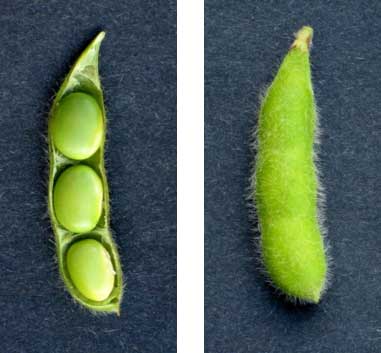
“Green bean” stage - bean fills pod cavity
Seed moist.: ~ 75-80%
~ 25 days remaining until full maturity
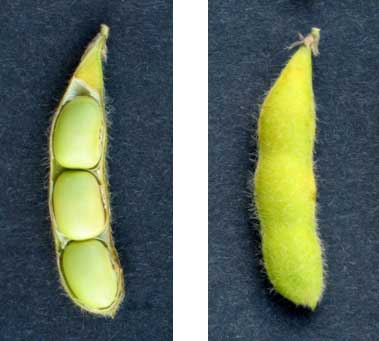
Pod/seed color between green and yellow
Seed moist. ~ 65-70%
~16-18 days remaining until full maturity
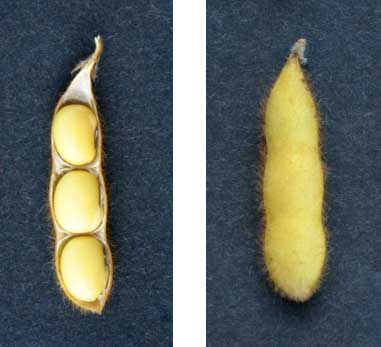
All green color lost from seeds and pods
Seed moist. ~ 55-60%
~8-10 days remaining until full maturity
Figure 1. Soybean growth stages and approximate seed moisture, and days to maturity.
To determine stage R6.5 start when leaf yellowing is first observed (Figure 2). Collect pods from top four nodes of plants randomly across field. Open pods and look for separation of beans from white membrane inside the pod. If separation has occurred for all pods collected, seeds are at physiological maturity and have reached maximum dry weight (Figure 3).
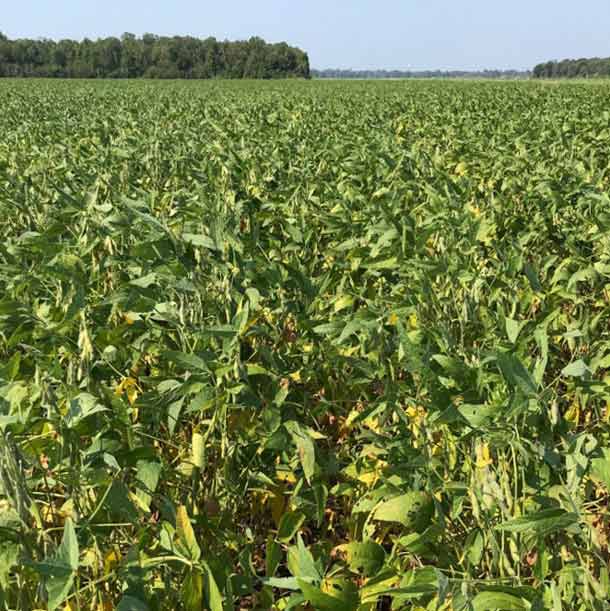
Figure 2. Scouting to determine the proper timing for desiccant application should begin when leaves start to turn yellow.
Research Results
A Pioneer field study was conducted in 2019 to evaluate soybean yield associated with different desiccation timings. Desiccation treatments consisted of Defol® 5 applied at R6.0, R6.5, or R7.0 growth stages. The study included six different soybean varieties and three replications.
Defoliation at R6.5 and R7.0 provided the best yield results. Yield was significantly reduced with R6.0 defoliation compared to the R7.0 timing (Figure 3). Harvest was expedited by an average of 9 days with desiccation compared to normal dry down.
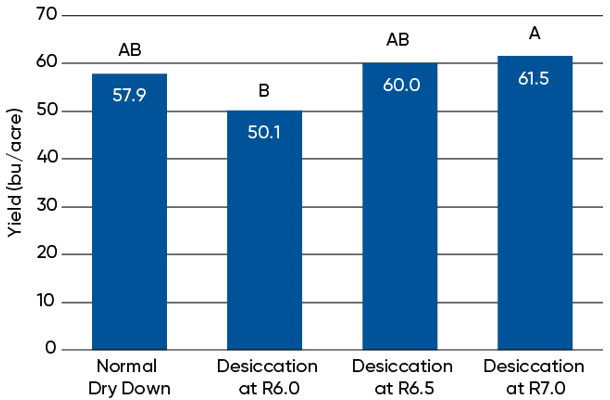
Figure 3. Soybean yields with normal dry down and different desiccation timings averaged across six varieties. Means with same letter groupings are not significantly different at α=0.05.
Commonly used desiccants in soybeans are paraquat (Gramoxone®), saflufenacil (Sharpen®), and sodium chlorate (Defol® 5). Each product label specifies a pre-harvest interval (PHI), which is the minimum amount of time that must elapse from application to soybean harvest. Of these, paraquat has the longest PHI of 15 days and requires the most precise timing to allow for the preharvest interval (PHI) to elapse before pods become too dry and shatter.
Studies at Stoneville, MS in 2016 and 2017 (Orlowski, 2018) found that Gramoxone applied alone was the most cost-efficient and effective desiccant.
Considerations when using Gramoxone as a desiccant:
Soybean desiccation can be a useful tool to improve soybean harvest efficiency. It can allow use of earlier planting and, in some cases, even the use of earlier-maturing varieties. However, desiccants should always be applied at the appropriate soybean growth stage (R6.5) to reduce potential yield loss while at the same time allowing for the appropriate pre-harvest interval. Always read and follow label instructions.
The foregoing is provided for informational use only. Please contact your Pioneer sales professional for information and suggestions specific to your operation. Product performance is variable and depends on many factors such as moisture and heat stress, soil type, management practices and environmental stress as well as disease and pest pressures. Individual results may vary.
Pioneer® brand products are provided subject to the terms and conditions of purchase which are part of the labeling and purchase documents.
December 2019